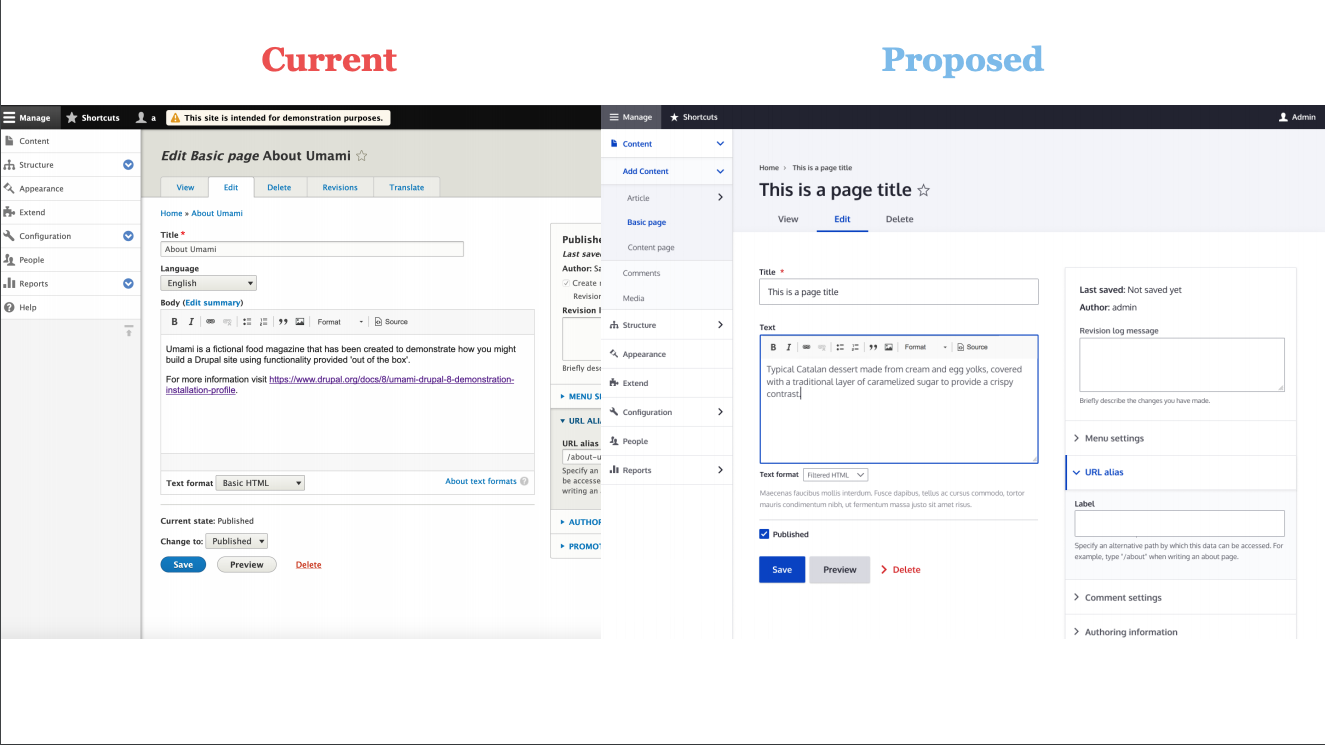After a number of complaints from the Drupal community, the Drupal Association finally removed the seemingly odd tagline “community plumbing” from its home page a few years ago (the word “plumbing” doesn’t make good SEO for a digital platform, you see).
Drupal isn’t a flashy, “next big thing” sort of technology. Like real plumbing, Drupal is hidden from sight but extremely reliable on well-designed sites. It will never get in the way of a site’s message. The open source content management system was built (and updated) by a global community of technical types, and as such is not particularly glamorous. The name “Drupal” (after druppel, the Dutch word for “Drop”) is a little funny sounding too.
But Drupal doesn’t need to go viral – Drupal has existed since 2001. It has the world’s largest (and by far the most enthusiastic, in my experience) open source community. Contributors have produced more than 30,000 modules for every possible use case and keep adding more (more than 2,000 commits per week). Drupal is proof that a post-millennial digital platform can have timeless appeal and reliability.

In April 2019, Drupalists gathered in Seattle for DrupalCon North America, which turned out to be the largest DrupalCon in history. In his keynote, Drupal founder Dries Buytaert celebrated a 35 per cent increase in websites on Drupal 8 over the past year. Drupal’s growth has been extraordinary, and the technology is more important today than ever. Here’s why.
Site builders and web homogenization
One of the purported threats to custom website development, in general, is the rise of site-building tools such as Wix and Squarespace. These popular tools make it easy for anyone to build a beautiful website without a single line of code. The internet is looking a lot better these days, but there’s a catch. Websites are all starting to look the same, whether it’s a multinational corporation or a local laundromat, a reputable source for journalism or a fake news site. This is called web homogenization. Good web design has been commoditized, in a sense.

While Wix and Squarespace will render a number of technologies and agencies obsolete as they improve in complexity, they will only increase the importance of Drupal. Drupal can power any website, but it is most valuable at the margin of enterprise web development. Drupal shines in custom-built solutions where its flexible content architecture, security, integration capabilities and scalability are relied upon by the world’s largest organizations.
When web design has been commoditized, enterprises need a platform that can do some serious heavy lifting on the technical side (and produce an enriching experience beyond visuals) to stand apart.
Powerful vendors and platform creep
Cost and consolidation don’t necessarily improve the quality of service. Accenture, a digital services firm and Fortune 500 company that has grown considerably by acquiring other tech companies over the years, is a good example. In April 2019, Hertz, itself a Fortune 500 company, filed a $32 million lawsuit against Accenture over a catastrophic website redesign. Hertz assumed that a digital solution built with expensive, flashy technology would secure its digital presence. Instead, Hertz blew millions on technology proposed by Accenture that the company couldn’t properly leverage.
In recent years, we’ve been seeing greater momentum towards the consolidation of digital platforms and services among a smaller number of companies. Like Accenture, Google, Amazon, Facebook, Microsoft and Adobe are dominant names across several different channels. Some people welcome this as necessary for a better integrated and more convenient internet, but there are some serious drawbacks.

The centralization of digital services has produced a high-risk dependency effect among their customers, known as “platform creep.” With proprietary technologies, this soon becomes an extremely expensive lock-in situation as licensing fees grow.
Open source technologies, on the other hand, have no licensing fees and there is a far wider pool of vendors who not only compete with one another but collaborate on the source code of the project they mutually rely on. In an increasingly centralized internet, a decentralized approach using Drupal is a powerful way to stand apart and to secure one’s digital brand.
Why is Drupal so important? Couldn’t the same be said for other open source platforms like WordPress?
Platform creep affects enterprises the most: larger companies have greater dependencies (generally speaking). Drupal stands out because, particularly with the release of Drupal 8, the platform has reinvented itself as the de facto standard for enterprise content management systems. While companies using Drupal may still depend on platforms like Google Ads and YouTube for marketing, the core of their digital presence – their website – is safeguarded by an open source approach that can still drive technical innovation. Moreover, Drupal possesses seamless integration capabilities to these external platforms through a vast library of free, contributed modules. There’s no need to worry about convenience with Drupal.
A growing market for enterprise content management
Hertz overlooked less expensive, open source alternatives such as Drupal in its failed digital project. But other enterprises such as Circle K, General Electric, Tesla, Johnson & Johnson and many others did not, and have successfully launched impactful digital experiences using Drupal.

Spurred by digital transformation initiatives, the enterprise content management (ECM) market is expected to grow to US$94.6 billion globally by 2024 (from US$30.9 billion in 2017). Drupal has long been known for its enterprise applications due to its scalability and flexibility. As website builders and powerful platforms narrow the gap between non-enterprise and enterprise websites, enterprises will seek to set themselves apart once again. Drupal’s powerful information architecture, personalization, multilingual, accessibility, extendability and security features will capture a sizeable chunk of this growing market to re-establish what it means to be an enterprise website (especially as this coincides with the 2020 release of Drupal 9).
Circle K, the international convenience store brand, recently built the world’s largest and most complex Drupal intranet with OPIN, further proving the capabilities of the platform for enterprises.
Drupal’s future is secured
From increasing enterprise adoption to governmental support, Drupal’s future is incredibly bright. 2019 began with the European Union launching a bug bounty program for open source technologies. The reward for identifying a bug in Drupal is one of the highest (€15,000), indicating strong support for the open source project. Drupal’s popularity among governments is increasing as well, with many governments committing to open source principles and adopting Drupal as their platform of choice.
The Drupal project is strongly backed by private sector digital services providers as well. Acquia, one of the fastest-growing software companies in North America, is the go-to hosting provider for enterprise Drupal websites. In fact, on the day when the U.S. Department of Justice was set to release the Mueller report on its Drupal website, Acquia successfully ensured that in spite of the 7,000 per cent surge in traffic the site kept running smoothly.
Drupal is also securing its own future, thanks to its forward-looking community and the marketplace of agencies that support the technology. Drupal 8 currently uses a minor upgrade, continuous innovation model, which will create a smoother upgrade path between Drupal 8 and Drupal 9, and every future version of Drupal.
As new approaches to Drupal development become more commonplace, demand for Drupal developers is growing rapidly. Decoupled approaches to Drupal, for instance, leverage Drupal’s powerful functionality as the back-end of a website, with another technology like Angular serving as the front-end. This further widens the scope of what is possible with Drupal. The more flexible a technology is, the more future-proof it is.
And finally, do you remember when I said that Drupal wasn’t very flashy? Well, the community has recognized the importance of building an extremely powerful tool that is also beautiful. Here’s what to expect in an upcoming release of Drupal (taken from a slide from Dries Buytaert’s DrupalCon keynote):

That’s some good-looking plumbing! Can you believe it’s free?
Conclusion
The reasons for Drupal’s historic and future sustainability aren’t always obvious. Expensive proprietary technologies admittedly do often steal the spotlight from the robust, open source CMS. Drupal’s growth can only be attributed to a consistent and honest commitment by the Drupal community and supporting organizations to deliver the most powerful open source CMS on the market, endearing it to global enterprises. Everyone needs a skilled plumber!
Drupal turned 18 earlier this year. It’s safe to say that adulthood will serve the CMS extremely well in the new digital landscape. That’s why at OPIN, Drupal is behind every one of our award-winning enterprise projects.
Stephen Boucher is a marketer at OPIN Software, Canada’s fastest-growing digital agency. He believes that even the most complex problems of the digital age should be resolved by starting from first principles, not chasing trends. Read more of Stephen’s insights in OPIN’s blog.


